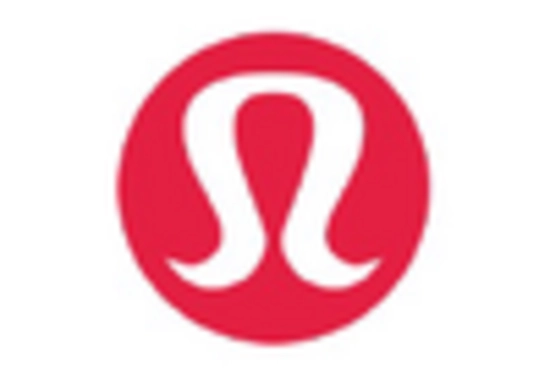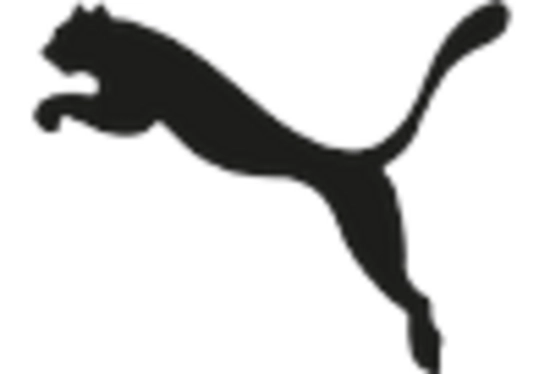The Fitness Apparel Market is currently characterized by a dynamic competitive landscape, driven by innovation, sustainability, and digital transformation. Major players such as Nike (US), Adidas (DE), and Lululemon (CA) are at the forefront, each adopting distinct strategies to enhance their market positioning. Nike (US) continues to leverage its strong brand equity through innovative product launches and a focus on sustainability, while Adidas (DE) emphasizes its commitment to eco-friendly materials and collaborations with high-profile designers. Lululemon (CA), on the other hand, has carved a niche in the premium segment, focusing on community engagement and experiential retail, which collectively shapes a competitive environment that is both diverse and rapidly evolving.
In terms of business tactics, companies are increasingly localizing manufacturing to enhance supply chain efficiency and reduce lead times. This trend is particularly evident in the Fitness Apparel Market, which is moderately fragmented, allowing for both established brands and emerging players to coexist. The collective influence of key players is significant, as they not only set trends but also drive consumer expectations regarding quality, sustainability, and technological integration in apparel.
In August 2025, Nike (US) announced a partnership with a leading tech firm to develop smart fitness apparel that integrates wearable technology. This strategic move is pivotal as it aligns with the growing consumer demand for multifunctional clothing that enhances performance and provides real-time health data. Such innovations are likely to redefine user experiences and set new benchmarks in the industry.
Similarly, in September 2025, Adidas (DE) launched a new line of biodegradable sportswear, reinforcing its commitment to sustainability. This initiative not only addresses environmental concerns but also positions Adidas as a leader in eco-conscious fashion, appealing to a growing demographic of environmentally aware consumers. The strategic importance of this move lies in its potential to attract a loyal customer base that prioritizes sustainability in their purchasing decisions.
In October 2025, Lululemon (CA) expanded its The Fitness Apparel Market with a flagship store in Tokyo. This expansion reflects Lululemon's strategy to tap into the burgeoning fitness culture in Asia, which is characterized by a rising interest in health and wellness. The significance of this move is underscored by the potential for increased brand visibility and market share in a region that is rapidly adopting fitness trends.
As of October 2025, the Fitness Apparel Market is witnessing trends that emphasize digitalization, sustainability, and the integration of artificial intelligence in product development and customer engagement. Strategic alliances are increasingly shaping the competitive landscape, enabling companies to pool resources and expertise to innovate more effectively. Looking ahead, competitive differentiation is likely to evolve from traditional price-based competition to a focus on innovation, technological advancements, and supply chain reliability, as brands strive to meet the sophisticated demands of modern consumers.


















Leave a Comment